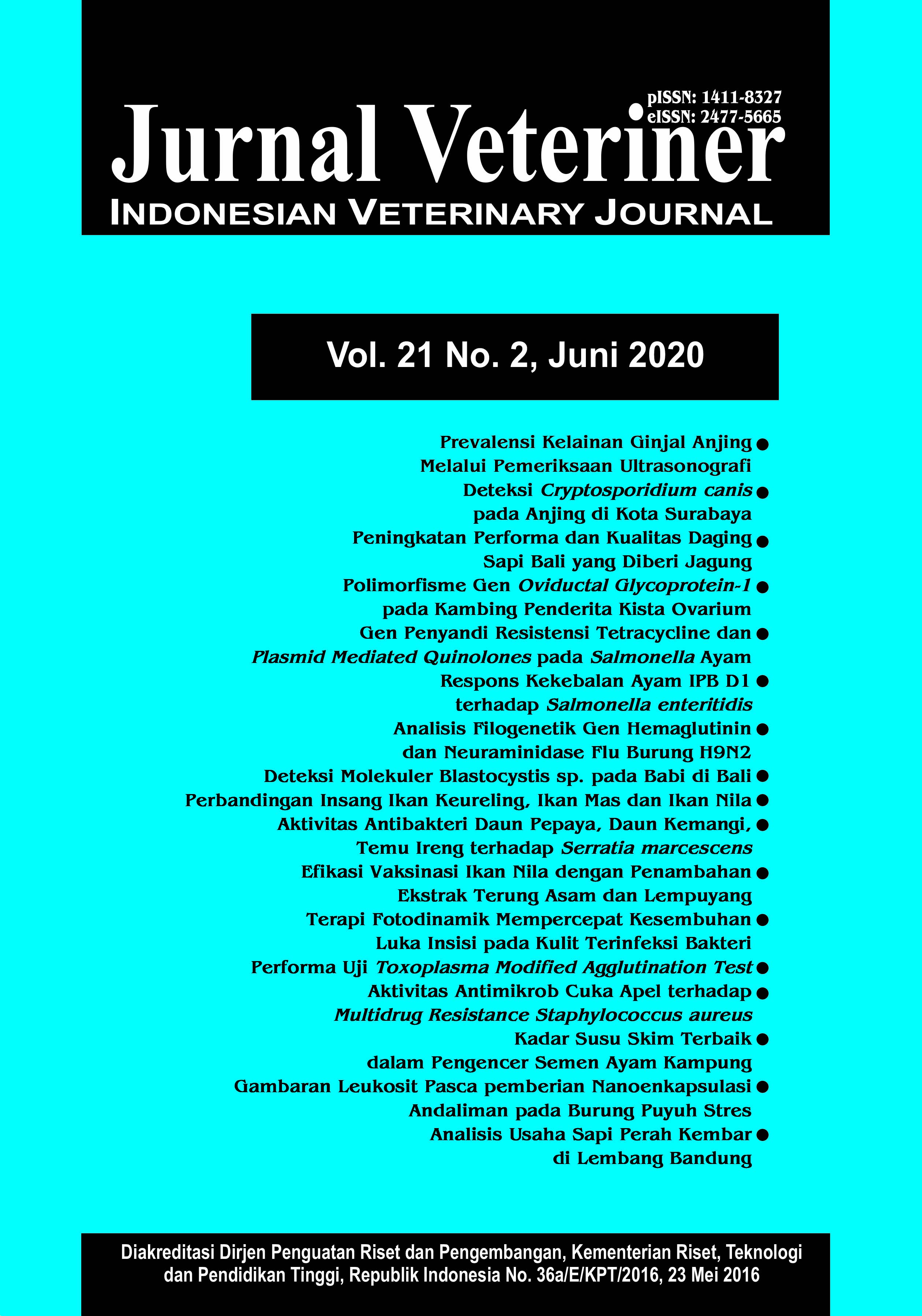Perbandingan Secara Anatomi Insang Ikan Keureling (Tor tambroides), Ikan Mas (Cyprinus carpio) dan Ikan Nila, (Oreochromis niloticus)
(ANATOMICAL COMPARISON OF GILLS OF THAI MAHSEER’S (TOR TAMBROIDES), CARP (CYPRINUS CARPIO) AND TILAPIA, (OREOCHROMIS NILOTICUS)
Abstract
This study aims to describe the anatomical differences in the gills of the thai mahseer’s (Tor tambroides), carp (Cyprinus carpio) and tilapia (Oreochromis niloticus). The stages of this study include the preparation of test fish, preparation of gill, documentation, identification, and analysis. This study used five fish for each type of fish with total weight ranged from 500-1000 g and length 28 to 40 cm. Analysis of each gill section was carried out morphology and morphometric. Morphometric data on the arcus branchialis section observed included the ratio of branchial arcus length to total length, on the part of the branchial filament including the average number of branchialis filaments per branchial arcus, density of branchialis filaments (filaments/cm), and length ratio of branchial filaments with the length of the branchial arcus, while in the branchiospinal part includes the average number of branchiospinalis per branchialis arcus and density of branchiospinalis. Result showed that morphologically, the anatomical differences in keureling gills, carp and tilapia are located in the form of branchiostegal and branchiospinalis membranes. Anatomical differences were seen in relative gill weight, branchial arcus length ratio, branchiospinal density, average number of branchial filaments, average density of branchialis filaments and average number of branchiospinalis. Carp have higher relative weight values of gills compared to tilapia and keureling fish which are 3.73 ± 0.43%, 2.82 ± 0.64% and 1.92 ± 0.55%, respectively. Tilapia has the shape and size of gills that are more developed in supporting the performance of the respiratory system than carp and keureling fish.



















